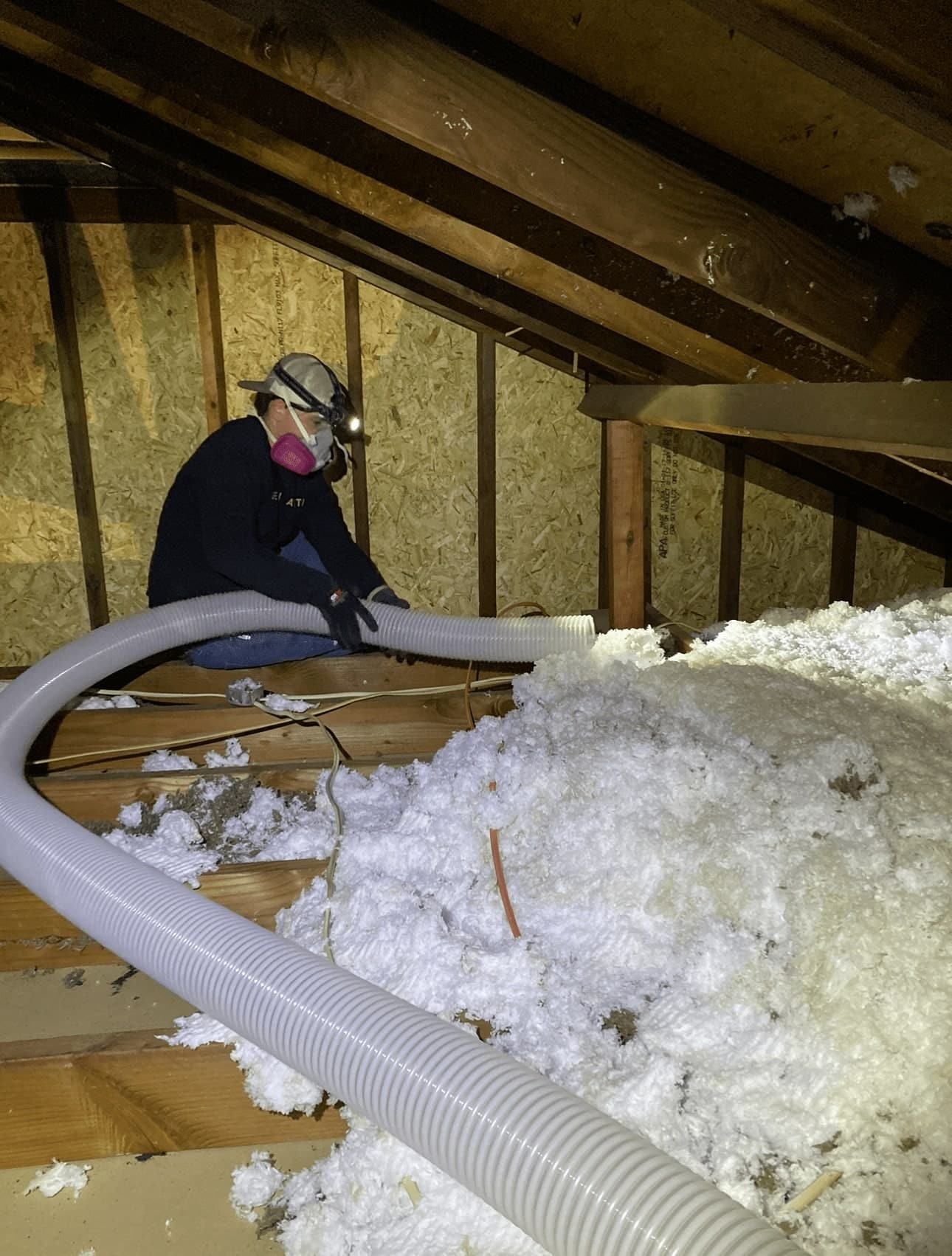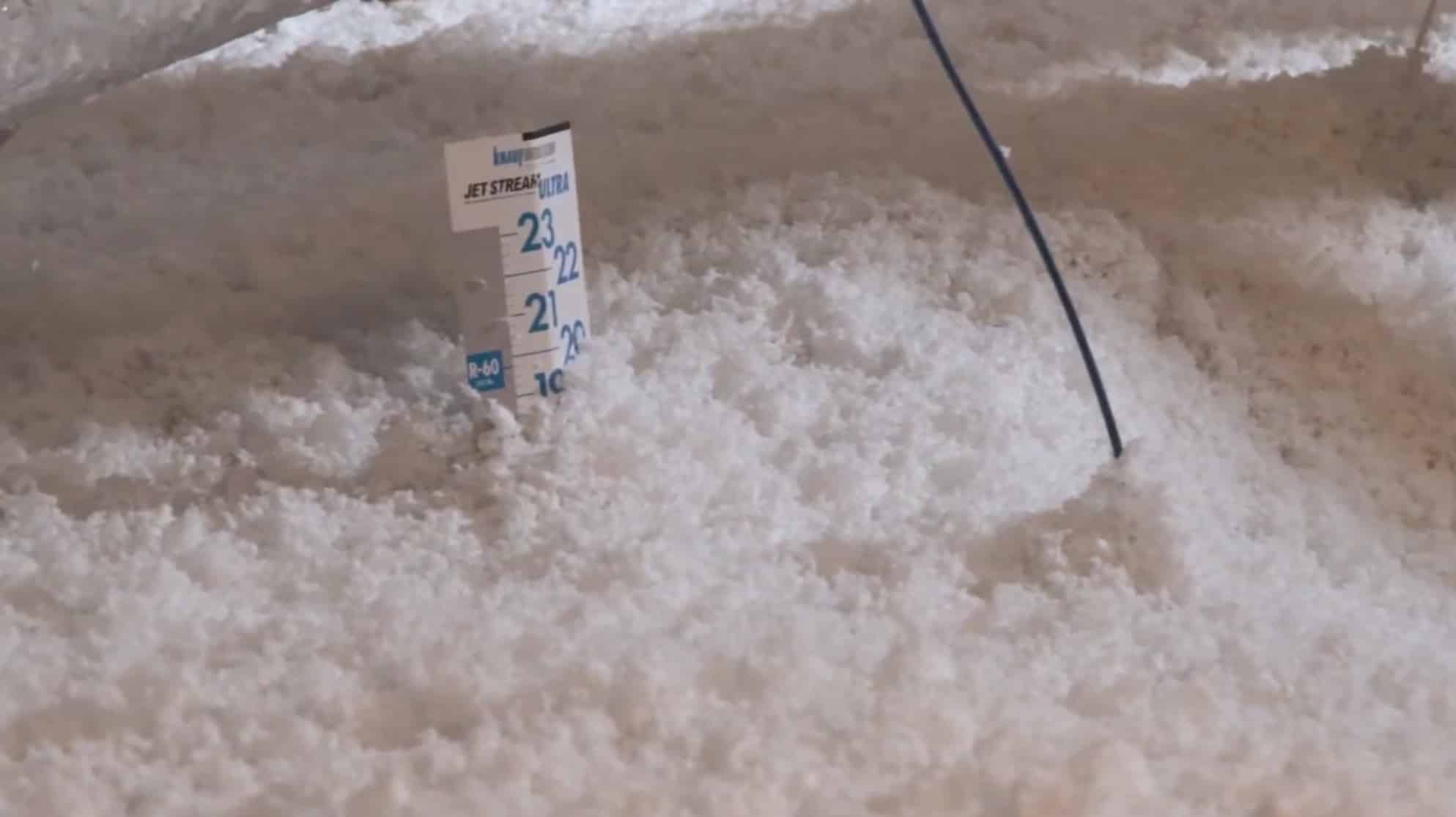Green Attics for Beginners
Wiki Article
The Ultimate Guide To Green Attics
Table of ContentsGreen Attics Fundamentals ExplainedThe 20-Second Trick For Green Attics6 Easy Facts About Green Attics DescribedThe Definitive Guide to Green AtticsThe Of Green Attics9 Easy Facts About Green Attics ShownGreen Attics Fundamentals Explained
Building codes require that air areas between smokeshafts and flooring or ceiling assemblies with which they pass be secured with a non-combustible fire quit (see Number 5-3 and Number 5-4). There is usually a space between the party wall (such as the shared wall surface between systems in duplexes, triplexes and row residences) and the side of the attic flooring.
A heavy polyethylene sheet which is caulked with acoustical sealer and stapled to the ceiling encases the electrical box. An electrical cable diverts from the electrical box and down through an opening right into an indoor wall surface. Holes around electric cables are loaded with caulking or foam sealer, and caulking seals voids along the top of the interior wall surfaces.
Attic ventilation serves a number of purposes. Radiant barriers. It minimizes summer season warm buildup, prolonging the life of roofing and lowers air conditioning system loads. After air sealing, attic room ventilation is your second line of support versus the water vapour that might have discovered its way right into the attic room. It ensures a cooler, well-vented attic room room much less susceptible to the development of ice dams at the eaves.
The smart Trick of Green Attics That Nobody is Talking About
You may need to find roof covering or soffit vents from outdoors if they are not plainly visible from inside the attic room. Residences with actually peaked roofing systems and accessible attics are the most convenient to air vent by using the ratio of 1 to 300. This ratio refers to unblocked air vent location to the protected ceiling area.
The following Parts information the ideal method depending on your attic room kind. After you have actually examined the attic and carried out any remedial job, emphasis first on air and moisture control.
The Best Guide To Green Attics
On the other hand, spray foam uses air securing and an initial layer of excellent quality insulation that can be covered approximately the preferred RSI (R) degree. If the attic room retrofit is being completed combined with interior improvements, the easiest approach is to install a new, single air and vapour barrier on the bottom of the ceiling joists.The primary difficulty with this technique includes securing the barrier to the wall surface top plate, especially at the eaves where there is little room to manoeuvre. This area should be well secured. Spray foam or stiff board insulation can assist bridge the space in this field. Cut stiff board to fit in between the ceiling joists and to extend from the exterior wall leading plate towards the attic. Home energy efficiency.
Eliminate existing insulation from the area you are working on and set it to one side. Caulk all edges, voids and joints, see Figures 5-10 and 5-13.
Spray foam specialists can set up closed-cell foam between the joists to air seal and include insulation at the exact same time to the ceiling. All existing insulation and dirt must be removed initially to allow for a good bond.
Our Green Attics PDFs
(https://canvas.instructure.com/eportfolios/3358572/home/maximize-comfort-and-efficiency-with-green-attics)This eliminates roof covering venting and develops what is called a warm roofing system, where the attic area becomes component of the conditioned (heated and cooled down) house room. This process might be suitable for some attic rooms, but do not continue without approval from your structure inspector, and after that only utilize a certified spray foam specialist who recognizes with the procedure.
If there are obstructions over the joists, such as with a truss roof, it may be most convenient to put batt insulation right into the joist rooms and afterwards make use of loose-fill insulation to create a total covering of insulation above the joists and around all obstructions. Loose-fill insulation is additionally good by itself, specifically in irregular or obstructed areas.

An Unbiased View of Green Attics
Usage baffles in between each rafter space to avoid it from being obstructed (see Figure 5-11). Protect above and listed below cross bracing, splitting or reducing the batt to accommodate the cross supporting as illustrated in Number 5-12. Reduced one batt into a collection of wedges and then fit a wedge under each support.The first layer of batts must be thick enough to totally fill to the top of the joist area. The 2nd layer can then run vertical throughout the joists to block any kind of heat circulation via and around the joists (see Figure 5-13). Solar attic fans. Make sure that there are no voids between the two layers of insulation
Start at one end of the attic and spread out the blanket. Number 5-11 Baffles can be made use of to keep airflow through the soffit vents Text version Cutaway of baffles between attic roofing joists with arrowheads showing air activity traveling from the exterior, through a vent in the ceiling overhang, and over the baffles.
All About Green Attics
Figure 5-13 The top layer of insulation runs vertical down layer Text version Illustration of layers of batts of insulation in between and above attic room joists. Batts on top of joists are perpendicular to batts between joists. A polyethylene sheet is laid under both layers of insulation and affixed to the top of attic room joists by caulking and staples.
If the loosened fill is deeper than the joists, develop insulation structure (a crib) around the attic hatch to make sure that it can be filled up to the edge (see Number 4-7). The bags of insulation material will note the number of square metres (or square feet) each bag should cover to offer the needed RSI value.
The Basic Principles Of Green Attics
If you are having a contractor do the job, calculate the RSI worth that you want and examine the bags of insulation to be used. They need to indicate the area that one bag will cover at the selected protecting value. You and the specialist should after that agree on the complete number of bags to be utilized, the anticipated insulating value and the minimal settled depth of insulation throughout the attic room, based upon a particular thickness.Report this wiki page